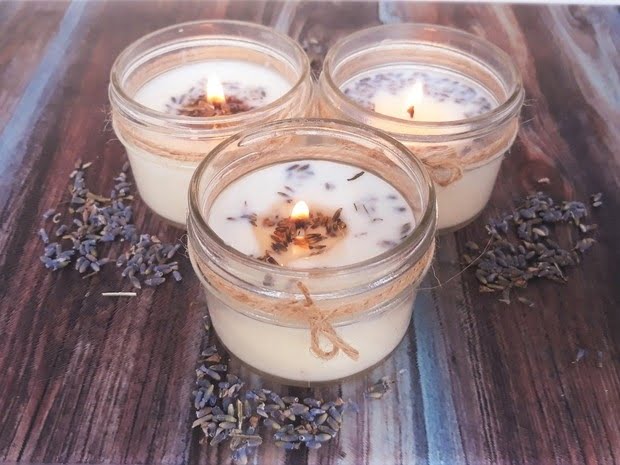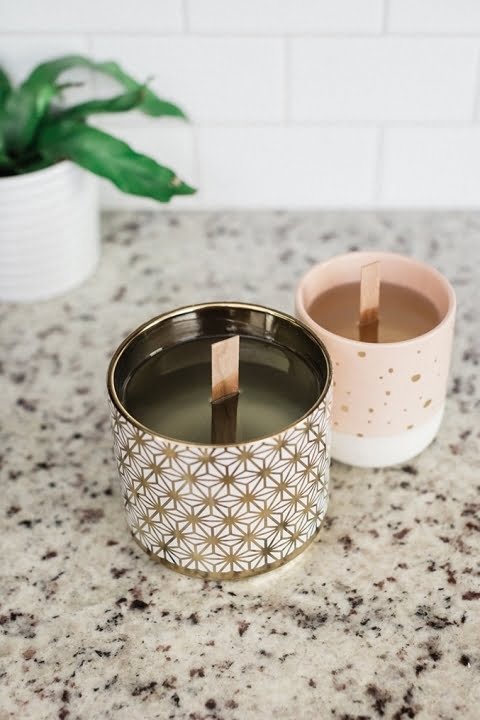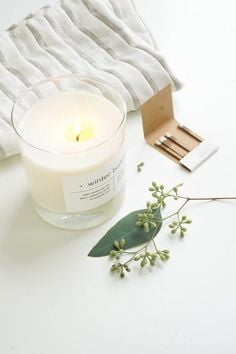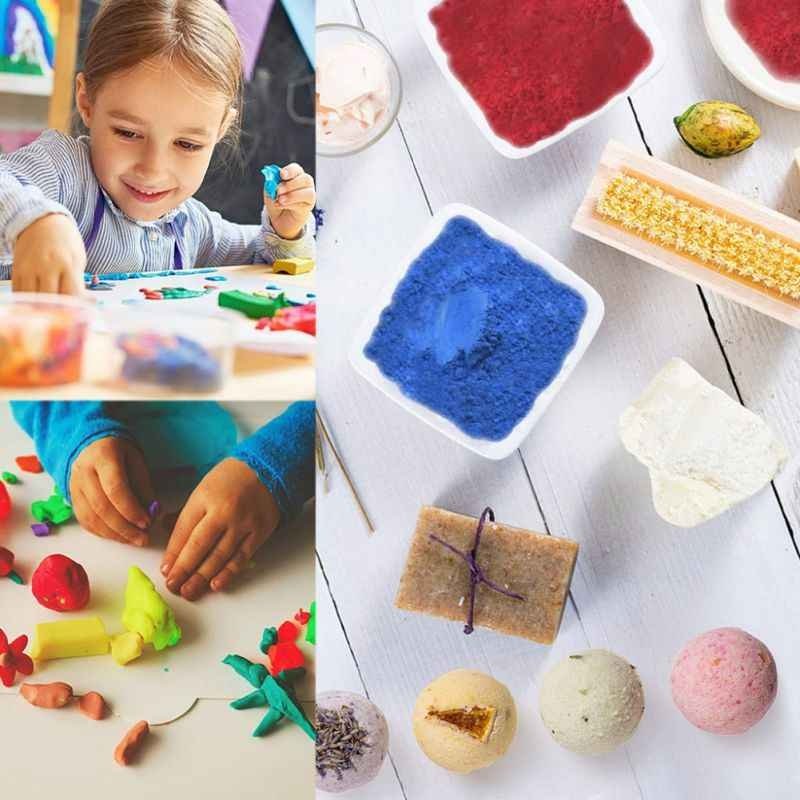Candle making is a popular and enjoyable craft that allows individuals to create their own unique and personalized candles. While many aspects contribute to the art of candle making, one crucial factor often overlooked is the choice of metal used in the process.
The type of metal chosen can affect both the safety and aesthetic appeal of the final product. In this article, we will delve into the world of candle making and explore the various metal options available, guiding you towards making informed choices for your candle-making projects.
When it comes to candle making, safety should always be a top priority. Choosing the right metal is an essential aspect that cannot be taken lightly. Certain metals can withstand high temperatures better than others, ensuring that your candles burn safely without compromising structural integrity. Additionally, selecting suitable metals helps prevent any potential health hazards caused by harmful fumes or excessive heat transfer during burning.
To help you make an informed decision about which metal to use in your candle-making endeavors, we will provide a comprehensive overview of common metals used in this craft. From stainless steel to aluminium, brass, copper, iron, wrought iron, tin, zinc, and even lesser-known alternatives – we will explore each option’s benefits and considerations.
By shedding light on these metals’ individual characteristics and properties, you’ll gain a deeper understanding of how they can enhance your candle-making experience.
By considering factors such as safety requirements, aesthetic preferences, affordability concerns, and creative possibilities for different techniques – you can make an educated choice regarding the metal best suited for your specific needs. So let us embark on this journey together into the fascinating world of candle making where we discover how different metals contribute to creating stunning candles that are not only aesthetically pleasing but also safe to burn.
Safety First
When it comes to candle making, safety should always be a top priority. One important aspect of candle making safety is understanding the importance of choosing the right metal for your candles. The type of metal you use can have a significant impact on the performance and overall safety of your candles.
The Impact of Metal Choice on Candle Safety
The metal you choose for your candle containers or molds can affect how the heat is distributed while the candle burns. Some metals may conduct and retain heat better than others, which can lead to overheating and potential hazards such as container breakage or even fires. It is crucial to select a metal that can withstand high temperatures without compromising its structural integrity.
Avoiding Chemical Reactions
In addition to heat distribution, it’s important to consider any chemical reactions that may occur between your chosen metal and the ingredients in your candles. Certain metals may react with the fragrance oils or dyes used in your candle-making process, which can not only affect the scent and color but also pose health risks when burned.
It is essential to choose a metal that is resistant to these reactions and will not compromise the quality or safety of your candles.
By understanding the impact of metal choice on candle safety, you can make informed decisions when selecting metals for your candle-making projects. Consider factors such as heat distribution, potential chemical reactions, and overall safety when choosing metals for containers, molds, or other elements in your candle-making process. Taking these precautions will help ensure that your candle-making experience is both enjoyable and safe.
Common Metals Used in Candle Making
When it comes to candle making, choosing the right metal is essential to ensure the safety and quality of your handmade candles. There are various metals commonly used in candle making, each with its own unique properties and benefits. In this comprehensive overview, we will explore the most common metals used in candle making and their key characteristics.
One popular metal choice for candle making is stainless steel. Known for its durability and corrosion resistance, stainless steel containers are a great option for both beginners and experienced candle makers. It is heat-resistant, non-reactive, and easy to clean, making it ideal for all types of candles. Additionally, stainless steel containers come in various shapes and sizes, allowing you to create candles that fit your aesthetic preferences.
Another common metal used in candle making is aluminium. Lightweight and affordable, aluminium containers are especially favored by beginners in the craft. They offer good heat conduction properties, ensuring even burning of the candle wax. Aluminium containers are also available in a wide range of sizes, making them versatile for different candle styles.
For those looking to add an elegant touch to their handcrafted candles, brass is a popular choice of metal. With its warm golden color and lustrous appearance, brass containers bring a sense of sophistication and visual appeal to any candle design. However, it’s important to note that brass can react with certain types of fragrance oils or dyes, so it’s advisable to conduct compatibility tests before using brass containers.
Copper is another metal that offers unique aesthetic possibilities in candle making. Its reddish-brown hue gives candles a rustic and vintage look that can’t be replicated with other metals. Copper has excellent heat conductivity properties as well, ensuring efficient burning of the wax. However, copper can oxidize over time when exposed to air or moisture, so proper maintenance is necessary to keep its shine.
With this comprehensive overview of common metals used in candle making, you now have a better understanding of the options available to you. From stainless steel to aluminium, brass to copper, each metal brings its own charm and benefits to your candle creations. Consider the specific requirements of your candle designs and your personal preferences when selecting the perfect metal for your candle making journey.
Stainless Steel
Stainless steel is a popular metal choice for candle making due to its durability, versatility, and resistance to corrosion. This section will explore the various reasons why stainless steel is an excellent option for candle makers.
Durability and Longevity
One of the main advantages of using stainless steel in candle making is its exceptional durability. Stainless steel is known for its strength and ability to withstand high temperatures, making it ideal for withstanding the heat of candles without warping or melting. This durability ensures that your candle molds or containers made from stainless steel will last for a long time, allowing you to create countless beautiful candles.
Resistance to Corrosion
Another significant benefit of stainless steel is its resistance to corrosion. Candle making often involves working with hot wax and different types of liquids and oils that can be corrosive to certain metals. However, stainless steel resists rusting, tarnishing, and other forms of corrosion, ensuring that your molds or containers remain in pristine condition over time.
Versatility in Design
Stainless steel offers immense versatility when it comes to designing candles. It can be easily molded into various shapes and sizes, allowing candle makers to create unique and intricate designs. Stainless steel molds come in a wide range of shapes such as pillars, votives, tapers, and even novelty shapes like animals or flowers. Additionally, stainless steel containers can be found in various sizes and styles, giving you the freedom to experiment with different looks for your handcrafted candles.
Aluminium
Introduction
When it comes to candle making, one of the most important factors to consider is the type of metal you use in your creations. Each metal has its own unique properties and characteristics that can significantly influence the outcome of your candles. In this section, we will explore the benefits and considerations when using aluminium as a metal option for candle making, particularly for beginners.
The Advantages of Aluminium
Aluminium is an excellent choice for beginners in candle making due to its lightweight and affordable nature. This metal is widely available and relatively inexpensive, making it a budget-friendly option for those who are just starting out in their candle making journey. Its affordability allows beginners to experiment with different techniques and styles without breaking the bank.
Another advantage of aluminium is its lightweight nature. This property makes handling and maneuvering aluminium containers or molds much easier compared to heavier metals. Beginners can easily pour and handle molten wax without straining their muscles or risking accidents. The lightweight nature of aluminium also makes it convenient for transporting finished candles or displaying them at markets or craft fairs.
Considerations When Using Aluminium
While aluminium has many advantages, there are some considerations to keep in mind when using it for candle making. Firstly, aluminium containers have lower heat resistance compared to other metals such as stainless steel or brass. As a result, they may not be suitable for certain types of candles that require higher temperatures during the pouring process. It is essential to consult specific guidelines and recommendations when choosing the appropriate aluminium containers or molds for your desired candle projects.
Additionally, aluminium containers may react with certain fragrances or additives commonly used in candle making. Some fragrances contain chemicals that can cause aluminum to corrode or discolor over time. To prevent any unwanted reactions, it is crucial to test your chosen fragrance oils or additives before committing to large-scale production using aluminum containers.
Overall, aluminium is a lightweight and affordable metal option that is ideal for beginners in candle making. Its advantages, such as cost-effectiveness and ease of handling, make it an excellent choice to start your candle making journey. However, it is essential to consider the heat resistance and compatibility with fragrances or additives when using aluminium containers for specific candle projects.
Brass
Brass is a popular metal choice in candle making due to its ability to add elegance and visual appeal to handcrafted candles. With its warm golden tone, this metal instantly elevates the aesthetic of any candle design, making it a favorite among crafters and artisans.
One of the key advantages of using brass in candle making is its durability. Brass is a sturdy and long-lasting metal, which means that candles made with brass accessories or containers will have a longer lifespan compared to those made with other materials. This durability also makes brass an excellent option for creating reusable or refillable candle holders, allowing candle makers to reduce waste and be more environmentally friendly.
Another reason why brass is favored by many candle makers is its versatility. Brass can easily be molded into various shapes and designs, allowing creators to experiment with different styles and incorporate intricate details into their candles. Additionally, brass can be polished to a high shine or left with a natural patina, giving candle makers the flexibility to achieve different aesthetic effects depending on their desired look.
When working with brass in candle making, it’s important to consider certain factors. Firstly, brass can conduct heat, so it’s essential to ensure proper insulation when using this metal as a container for hot wax.
Secondly, while solid brass has excellent corrosion resistance properties, it may develop patina over time when exposed to air and moisture. This natural aging process may actually enhance the beauty of the metal for some candle makers; however, if you prefer your brass accessories or containers to maintain a shiny appearance, regular cleaning and polishing may be necessary.
Copper
When it comes to candle making, the choice of metal can have a significant impact on both the functional and aesthetic aspects of your candles. While stainless steel, aluminum, and brass are commonly used metals in candle making, copper offers unique possibilities for creating candles with a distinctive look and feel. In this section, we will explore the various ways in which copper can be incorporated into your candle making process to enhance its visual appeal.
One of the most notable characteristics of copper is its warm and rich color. This beautiful reddish-brown hue can add a touch of elegance and sophistication to your handcrafted candles. Whether you choose to use copper as a decorative element or as a container for your candles, it can instantly elevate their overall aesthetic.
In addition to its color, copper also offers excellent thermal conductivity. This means that when you pour hot wax into a copper container, it will quickly distribute heat evenly throughout the candle. As a result, your candle will have a more consistent burn and melt pool, ensuring maximum fragrance throw and an even release of wax.
To showcase the unique properties of copper in candle making, many artisans choose to incorporate decorative elements made from this versatile metal. From intricate patterns etched onto copper containers to wire-wrapped handles or embellishments on pillars or tapers, these creative touches add an element of luxury and visual interest to the finished product.
| Copper Use | Advantages |
|---|---|
| Decorative copper containers | Enhanced visual appeal |
| Etched patterns on copper containers | Unique designs and customization |
| Wire-wrapped handles or embellishments | Added elegance and luxury |
| Copper candle molds | Thermal conductivity for even burn |
Iron and Wrought Iron
Iron and wrought iron are popular metal choices for candle making due to their vintage charm and ability to add a rustic feel to handcrafted candles. These metals offer unique aesthetic possibilities that can elevate the overall design of your candles while adding a touch of elegance and sophistication.
Iron, known for its durability and strength, is a versatile option for candle making. It is commonly used for creating candleholders, molds, and decorative elements. The sturdy nature of iron ensures that your candle creations will be stable and long-lasting. Additionally, iron can withstand high temperatures without warping or bending, making it ideal for candles that produce intense heat.
Wrought iron, on the other hand, boasts intricate designs and ornate detailing that can enhance the visual appeal of your candles. This type of iron is crafted by hand using traditional blacksmithing techniques, resulting in one-of-a-kind pieces that are truly unique. Wrought iron candleholders often feature beautiful swirls, curls, and twists that add an element of elegance to any space.
When working with iron or wrought iron in candle making, it is important to consider a few factors. Firstly, these metals may rust if they come into contact with moisture or are not properly sealed. Therefore, it is crucial to apply a protective coating such as paint or lacquer to prevent corrosion. Additionally, due to their weight and density, candles made with iron or wrought iron may require additional support or stability measures to ensure they do not topple over.
Tin
When it comes to candle making, choosing the right metal option can greatly enhance your creative process and the final outcome of your candles. One such metal that is widely used in candle making is tin. Tin offers a range of benefits, including affordability and versatility, making it an excellent choice for various candle making techniques.
One of the major advantages of using tin in candle making is its affordability. Compared to other metals like brass or copper, tin is relatively inexpensive, especially if you are just starting out as a candle maker or working on a tight budget. This makes it an ideal choice for beginners who want to experiment with different styles and designs without breaking the bank.
In addition to being affordable, tin is also highly versatile in terms of its applications in candle making techniques. It can be easily molded into different shapes and sizes, allowing you to create unique and customized candles according to your preferences. Whether you want to make small votives or larger pillar candles, tin can accommodate various forms and designs, giving you the freedom to unleash your creativity.
To fully utilize the versatility of tin in candle making, there are several techniques that you can explore. One popular technique is using tin molds or containers to pour melted wax into. These molds come in various shapes and sizes, allowing you to create candles with intricate details or simple yet elegant designs. Another technique involves shaping thin sheets of tin into decorative elements such as embossed patterns or wraps for pillar candles.
Zinc
When it comes to candle making, zinc is a metal that can provide unique properties and open up a whole world of creative possibilities. Known for its flexibility and versatility, zinc offers several advantages that make it an excellent choice for candle makers looking to add a special touch to their creations.
One of the most notable properties of zinc is its low melting point, which makes it easy to work with in candle making. This allows candle makers to experiment with different shapes, textures, and designs that may be more challenging to achieve with other metals. Whether you want to create intricate molds, embossed designs, or layered patterns, zinc can be easily manipulated to bring your creative vision to life.
In addition to its malleability, zinc also has excellent heat conductivity. This means that candles made with zinc wicks will burn evenly and efficiently, ensuring a longer-lasting and more consistent performance. The efficient heat transfer of zinc wicks also helps eliminate the formation of excess soot or uneven burning that can sometimes occur with other metals.
| Property | Data |
|---|---|
| Melting Point | 419.5°C (787°F) |
| Conductivity | 116 W/m-K |
| Density | 7.13 g/cm3 |
With its unique properties and versatility, zinc opens up endless possibilities for candle makers who want to let their creative spirit soar. From molding intricate shapes to achieving beautiful embossed designs, zinc can add a special touch to your handmade candles. Consider incorporating zinc into your candle making process and unleash your creativity like never before.
Other Metal Options
While stainless steel, aluminum, brass, copper, iron, wrought iron, tin, and zinc are commonly used metals in candle making, there are several other metal options that can add a unique touch to your creations. These alternative metals offer different properties and aesthetics that can elevate your candles to another level.
One such metal option is bronze. Bronze is an alloy made from copper and a combination of other metals such as tin or zinc. It has a warm golden-brown color and a lustrous finish, making it an excellent choice for creating elegant and sophisticated candles. Bronze candle holders or molds can add a touch of luxury to any setting. Additionally, bronze has good heat conductivity and durability, ensuring that your candles will burn evenly and last longer.
Another metal option to consider is pewter. Pewter is an alloy consisting primarily of tin with small amounts of other metals including antimony and copper. It has a silvery-gray appearance with a slightly dull finish. Pewter candle containers or molds give off vintage vibes while adding a rustic charm to your candles. Pewter also has a low melting point, making it easy to work with during the pouring process.
Lastly, titanium can be an interesting choice for candle makers looking for a modern and sleek aesthetic. Titanium offers exceptional strength while being lightweight at the same time. It has a silver-gray color with a metallic sheen that exudes contemporary elegance. Titanium candle holders or accents can create eye-catching pieces that stand out among traditional metal options.
When considering these alternative metal options in candle making, it’s important to remember that each metal has its own unique characteristics and considerations. Factors such as heat resistance, melting point, durability, cost efficiency, and availability should all be taken into account when choosing the right metal for your specific candle making project.
| Metal Option | Properties | Aesthetics |
|---|---|---|
| Bronze | Good heat conductivity, durability | Warm golden-brown color, lustrous finish |
| Pewter | Low melting point, easy to work with | Silvery-gray appearance, slightly dull finish |
| Titanium | Exceptional strength, lightweight | Silver-gray color, metallic sheen |
Factors to Consider When Choosing a Metal for Candle Making
When it comes to choosing the right metal for candle making, there are several important factors to consider. These factors will not only impact the safety and performance of your candles but also play a role in determining the overall aesthetic appeal of your finished products. Here are some key factors to keep in mind when selecting a metal for your candle making projects.
One crucial factor to consider is the melting point of the metal. Since candles involve heat, it is important to choose a metal that can withstand high temperatures without melting or warping. Stainless steel, brass, copper, and tin are all commonly used metals in candle making due to their high melting points and ability to handle the heat produced by burning candles.
Another factor to take into account is the reactivity of the metal. Some metals may react with certain candle ingredients, such as fragrances or dyes, which can affect the appearance or scent of your candles. For example, aluminum has a tendency to react with acids found in fragrance oils, resulting in discoloration. It’s important to research and test different metals with your chosen candle ingredients before committing to use them in your projects.
Durability is also an important consideration when choosing a metal for candle making. You want a material that can withstand repeated use and handling without rusting, corroding, or deteriorating over time. Stainless steel and tin are known for their durability and resistance to corrosion, making them ideal choices for long-lasting candle molds or containers.
Additionally, it’s essential to think about the visual appeal that different metals can bring to your candles. Metals like brass and copper add an elegant touch and can enhance the overall aesthetic of your handcrafted creations. Iron or wrought iron, on the other hand, lends a rustic charm to candles and works well with vintage or farmhouse-inspired designs.
By considering these factors – melting point, reactivity, durability, and visual appeal – you can make an informed decision when choosing the perfect metal for your candle making projects. Taking the time to select the right metal will not only ensure the safety and quality of your candles but also contribute to the overall success and satisfaction of your candle making journey.
Conclusion
In conclusion, choosing the right metal for your candle making journey is crucial for both safety and aesthetic purposes. Whether you opt for stainless steel, aluminium, brass, copper, iron, wrought iron, tin, zinc or even think outside the box with other metal options, each has its own unique properties and benefits. Considering factors such as heat resistance, durability, cost-effectiveness and visual appeal will help you make an informed decision.
Stainless steel emerges as a sturdy and versatile choice for candle making due to its high heat resistance and durability. It is perfect for all types of candles and can withstand high temperatures without warping or melting. On the other hand, aluminium is lightweight and affordable, making it an ideal option for beginners in candle making. It conducts heat evenly and allows candles to cool down properly.
If you are looking to add elegance and visual appeal to your handcrafted candles, brass is the way to go. Its golden hues bring a touch of sophistication to any design. Copper offers a unique aesthetic possibility with its reddish-brown tones. It creates a warm and luxurious look that complements various candle styles.
For those seeking vintage charm in their rustic candle creations, iron and wrought iron are excellent choices. These metals provide a rustic vibe that adds character to handcrafted candles. Tin is another versatile metal option that suits various candle making techniques. It is cost-effective and serves as an excellent container material.
Lastly, zinc opens up new creative possibilities with its unique properties. It has a low melting point which makes it perfect for creating intricate molds or decorative details in candles.

Welcome to my candle making blog! In this blog, I will be sharing my tips and tricks for making candles. I will also be sharing some of my favorite recipes.





